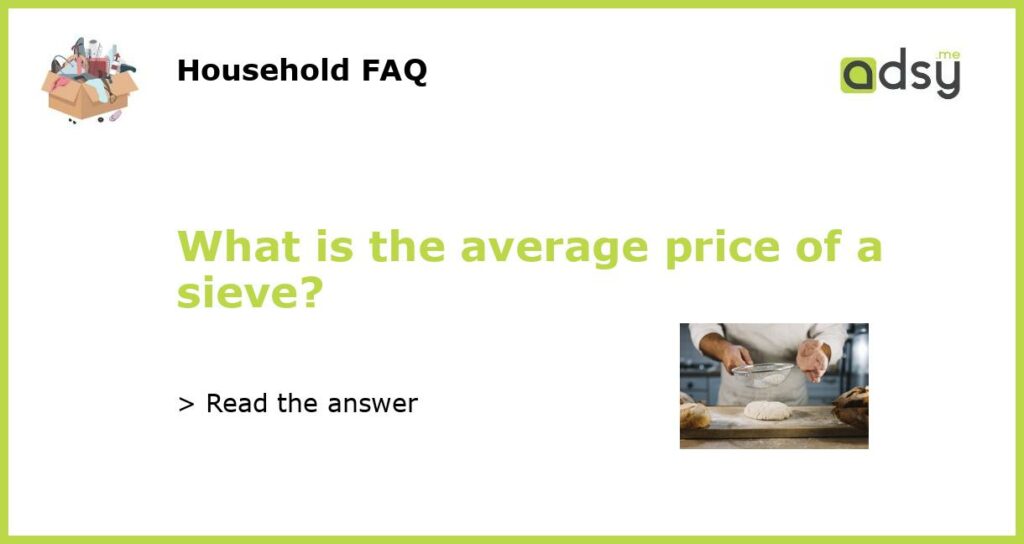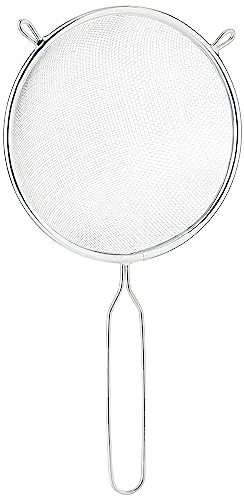The Average Price of a Sieve
When it comes to sieves, there are many factors that can influence the price. Size, material, and brand are just a few of the variables that can affect the average price of a sieve. In this article, we will explore these factors and provide you with an understanding of what you can expect to pay for a sieve.
Factors That Affect the Price
There are several factors that can affect the price of a sieve. One of the most significant factors is the size of the sieve. Larger sieves generally cost more than smaller ones due to the additional material required. The material of the sieve is also a key factor. Stainless steel sieves tend to be more expensive than plastic or aluminum ones due to their durability and ability to withstand high temperatures.
Another factor that can impact the price is the brand of the sieve. Well-known brands with a reputation for quality may charge higher prices for their products. These brands often invest heavily in research and development to create sieves that are more effective and efficient. As a result, their products may come with a higher price tag.
Price Ranges
The average price of a sieve can vary greatly depending on the factors mentioned above. However, to give you a general idea, plastic sieves are typically the most affordable option, ranging from $5 to $20. Aluminum sieves are slightly more expensive, with prices ranging from $15 to $40. Stainless steel sieves, on the other hand, can range anywhere from $30 to $100 or more.
It is also worth noting that the price of a sieve may vary depending on where you purchase it. Online retailers such as Amazon and eBay often offer competitive prices and a wide variety of options to choose from. However, local kitchen supply stores or specialty cooking stores may have different pricing.
Tips for Finding the Best Value
If you’re looking for the best value when purchasing a sieve, there are a few tips to keep in mind. Firstly, consider your needs and priorities. If you only need a sieve for occasional use, a more affordable plastic or aluminum option may be sufficient. However, if you require a sieve for professional or frequent use, investing in a higher-quality stainless steel sieve may be worth the extra cost.
Secondly, do your research and compare prices from different retailers. Check websites such as Amazon, eBay, and specialty kitchen stores to find the best deals. Don’t forget to read customer reviews to get an idea of the quality and durability of the sieves.
Lastly, consider purchasing a sieve set that includes various sizes. This can often be more cost-effective than purchasing individual sieves of different sizes. It also provides you with greater versatility in your cooking and baking endeavors.
The average price of a sieve can vary based on factors such as size, material, and brand. Plastic sieves are typically the most affordable, followed by aluminum, and then stainless steel. It’s important to consider your needs and priorities when choosing a sieve and to compare prices from different retailers to find the best value. Ultimately, investing in a high-quality sieve can greatly enhance your cooking and baking experiences.






